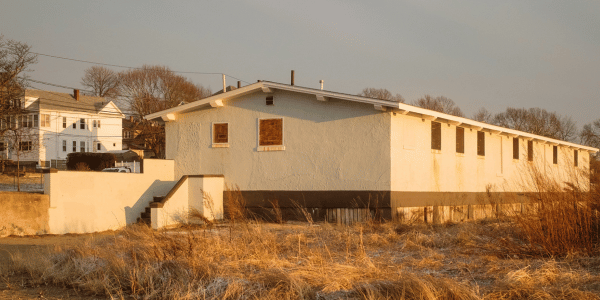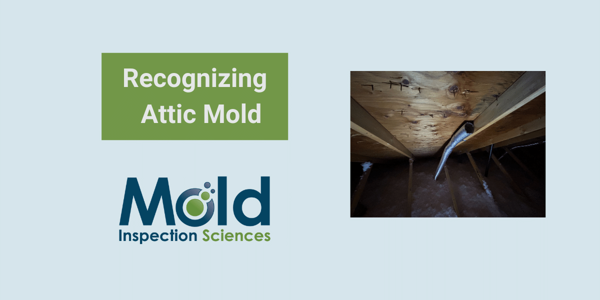A Battle on the Home Front: Mold in the Military
The Army Has a Mold Problem

A Battle on the Home Front: Mold in the Military
Aside from its presence in nature, mold is commonly found in many homes, its prevalence often making it seem less threatening despite the potential health risks. Roughly 47% of U.S. homes harbor mold to some extent, which can start from something as minor as a pinhole leak in drywall or high humidity in a poorly ventilated attic, spreading visibly throughout a building's structure.
The real concern arises when mold infestations escalate to massive proportions, as a recent NPR report reveals. It unveiled that over 2000 U.S. Army facilities were suffering from large-scale outbreaks, a hazard that required the relocation of more than 1000 service members from a single facility and resulted in the demolition of twelve Army buildings. It begs the question: How could such a widespread mold problem in the Army go unnoticed, and could it happen to my home or workspace?
The answer is not as surprising as one might think. Slight wall or ceiling stains can be easily overlooked in everyday life. For an institution like the Army, preoccupied with the daunting task of national security, a musty odor or water leak may not command immediate attention.
What Causes Mold in an Army Facility?
Like civilian properties, mold issues in buildings often originate from structural problems that may not be immediately noticeable. For example, a poorly sealed window might allow rain to seep in, which causes moisture to penetrate the building framework. Similarly, a leaking roof can allow moisture to accumulate in an attic, providing an ideal environment for mold to grow on wooden beams, which is then picked up by the HVAC system and dispersed throughout the building.
Humidity is often a key player. It is not surprising that many mold-affected Army facilities are situated in hot, humid locations, such as Fort Bragg in North Carolina, Fort Stewart in Georgia, and Schofield Barracks in Hawaii. Mold growth only requires three conditions: moisture, spores, and a food source, like building materials. These conditions are frequently present in Army facilities, creating hidden mold growth that only becomes noticeable when a small spot appears on a wall. The situation is exacerbated by the common use of a single air handler for entire buildings in Army facilities, which, if infiltrated by mold, can enable swift contamination throughout the structure.

How Can You Identify Mold Problems?
Detecting mold involves engaging your senses, starting with your sight. Visible signs of mold typically begin with small spots on a building's wall or ceiling, expanding over time. However, since mold can thrive unseen, your sense of smell also plays a crucial role. A musty, stale odor may indicate a mold problem.
Even your sense of hearing can be helpful indirectly. If those around you persistently suffer from symptoms like a chronic cough, sinus congestion, or red, itchy eyes, don't dismiss it as a circulating virus without further investigation.
It's important to note that the Army has adopted a procedure incorporating these recommendations. This empowers its nearly half a million soldiers to perform routine inspections of their facilities and report any suspicions, anticipating that the Army will swiftly address any mold-related issues uncovered.
Common Places Where Mold Grows Include:
- Inside walls, in between layers of wallpaper or tiling, or even right on the surface
- In ceilings and attics — especially when there is a leak present
- Under floors, floor materials, and crawl spaces
- Utility and maintenance rooms
- Around pipes and plumbing
- In roofing that either was not installed or maintained properly
- Construction areas

Check Out What a Mold Inspection Report Should Look Like

- Tips & Recommendations to solve help solve issues found on your property
- Suggestions to avoid the possibility of continued or future issues
- An Expert Action Plan for mold and moisture in your home and office that may be responsible for your health problems
What to Do Next
Addressing a mold issue promptly is essential, not just for those with underlying conditions who may face worsened health effects, but for everyone potentially affected. When a mold problem is suspected, engage a mold assessment professional to help determine the extent and formulate a remediation plan.
At Mold Inspection Sciences, we begin this process with an indoor environmental assessment of your property, employing cutting-edge moisture detection equipment and infrared technology. These tools help identify potential problem areas and measure moisture in your property's walls, flooring, ceiling, and other materials—often undetectable to the naked eye.
After inspecting, we recommend sampling tailored to the property's needs and our consultants' findings. Sampling is vital in any thorough mold or environmental investigation, as it confirms the presence and type of environmental hazards, helping us suggest the appropriate remediation steps.
Bear in mind, it's crucial to avoid any potential conflicts of interest by ensuring the mold assessment professional you hire does not also provide remediation services. While Mold Inspection Sciences doesn't offer remediation to maintain impartiality, we can oversee necessary restoration and remediation efforts. Our 20 years of experience ensures your project stays on course and is completed appropriately.
Take the Next Step
Need help to determine whether a potential mold problem is affecting your facility? Our science-based inspection and testing services will help you determine if there is such a concern and provide the suggested next steps to address the issue effectively and comprehensively.




